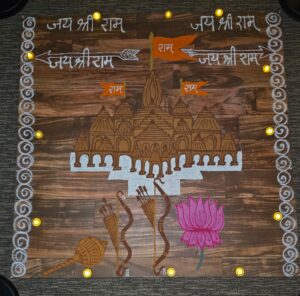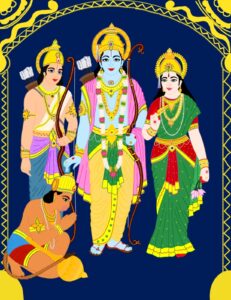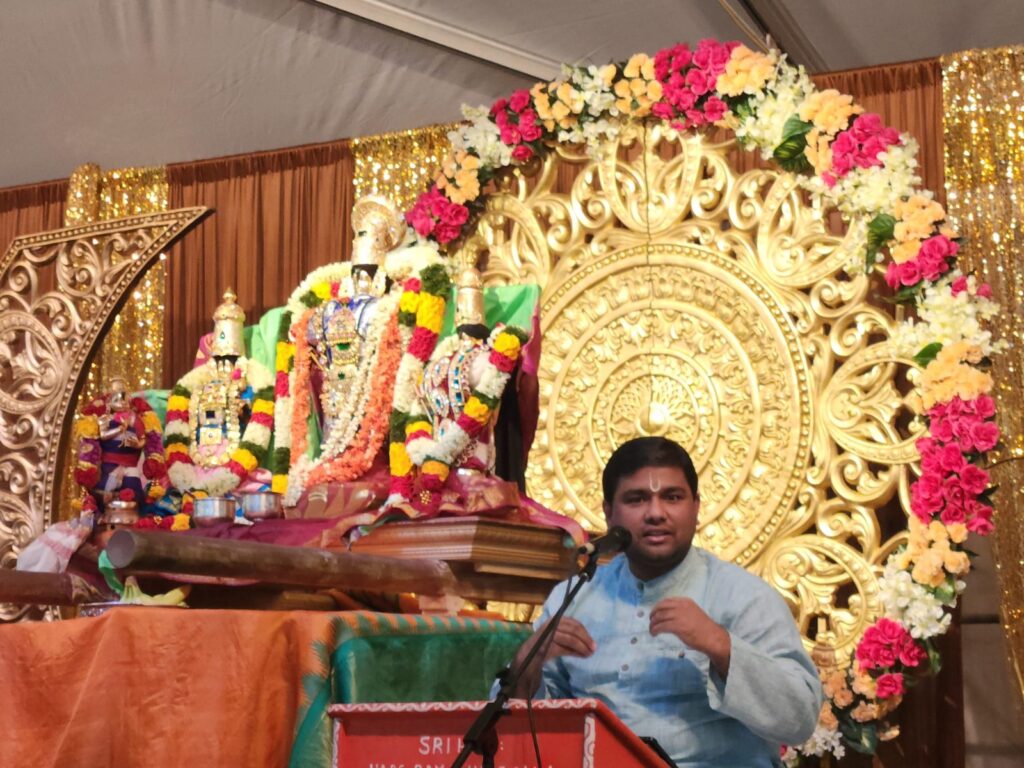On January 22, 2024, the world witnessed the Pranapratishta of Lord Sri Rama in Ayodhya, an epochal event marking the reconstruction of a temple that had awaited rebirth for 500 years. This occasion symbolized the fulfillment of a centuries-old yearning, a dream for which countless individuals have dedicated—and even sacrificed—their lives.
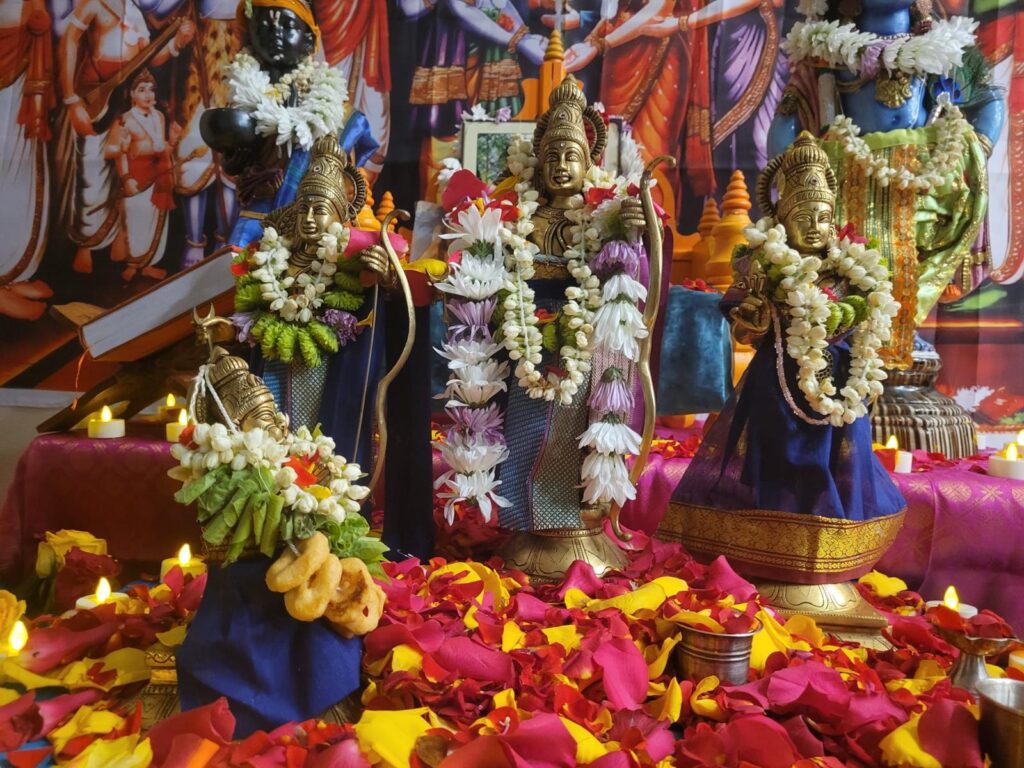
Lord Rama is revered as the epitome of dharma and righteousness, setting an example for mankind. His return to Ayodhya, his birthplace, was celebrated as a momentous homecoming, stirring deep emotions for devotees globally. In Ayodhya, the air vibrated with the chants of Vedic hymns, the fragrance of incense, and a collective spirit of devotion. Thousands gathered, their eyes reflecting the temple’s grandeur, an architectural marvel blending ancient tradition with contemporary artistry. This celebration was more than just the inauguration of a temple; it was a cultural resurgence, reconnecting people with the legacy of Sri Rama.
As the temple’s majestic spires rose against the surrounding city, they heralded not just a new chapter in India’s spiritual journey but also resonated across the globe including in the United States. Thousands of miles away, Global Organization for Divinity (GOD) satsangs in various US cities echoed this joy.
At the behest of HH Maharanyam Sri Sri Muralidhara Swamiji, each Namadwaar in the USA (and also in other countries and indeed in India also) was transformed into a festive haven, adorned with vibrant Rama Nama banners. Rangolis depicting Lord Rama and the Ayodhya Mandir added to the visual spectacle. As dusk fell, the warm glow of deepams cast a serene light over the gatherings. Each community wove their own fabric of celebration, imbued with profound faith and cultural pride, creating an atmosphere that was both visually stunning and emotionally powerful.
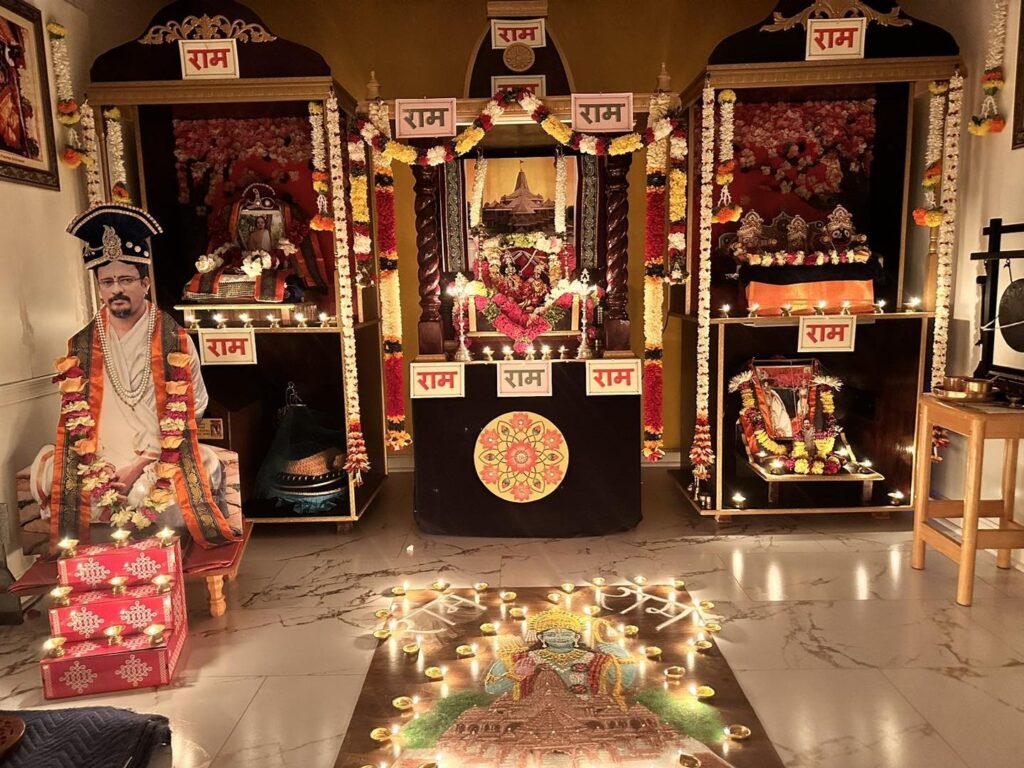
A prominent feature of these celebrations was the recitation of sacred texts like the Sundara Kanda and Sri Rama Pattabhishekam Parayanam, which resounded through the halls. The chanting of Rama nama and the Mahamantra reverberated, accompanied by Sri Swamiji’s Madhurageethams dedicated to Lord Rama, Sita Mata, and Hanumanji. These sacred chants and songs created an atmosphere of reverence. In several communities, the traditional ‘Sita Kalyanam’, a ceremonial wedding of Lord Rama and Sita Mata, was observed with grandeur, adorned with elaborate decorations and vibrant flower garlands, and enriched with bhajans and Ashtapadi, drawing hundreds of participants.
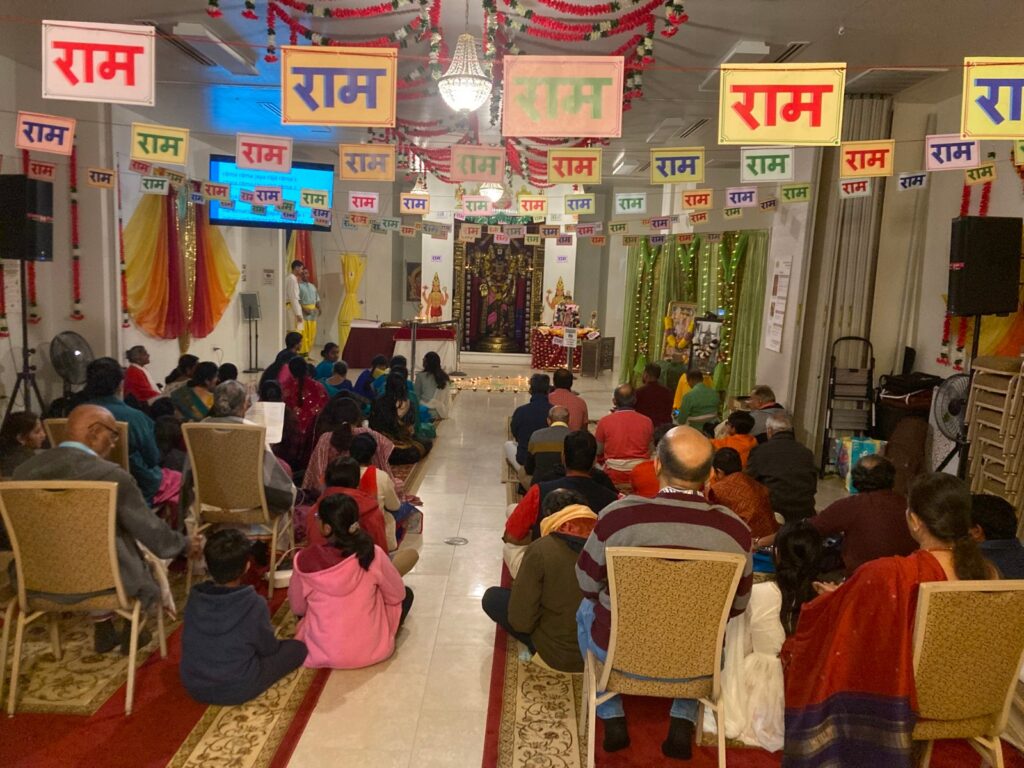
As ordained by Sri Swamiji, cities across the country participated in Akhanda Mahamantra kirtan, the continuous chanting of the Divine Names, symbolizing unbroken devotion. From east to west, the air was filled with 12 hours of non-stop spiritual vibration that transcended geographical boundaries. In a blend of tradition and technology, some of these sessions were held over Zoom, uniting devotees across distances.
‘Paduka Pattabhishekam’ was also celebrated, with devotees venerating the holy Padukas, symbolizing the presence and blessings of the divine. A particularly captivating event was the purappadu, a ceremonial procession where the Lordships were taken around in a beautifully decorated chariot amidst the singing of their glories, bringing divine blessings to the community. Central to each event was also the recitation of the Hanuman Chalisa, a hymn in praise of Lord Hanuman, underscoring a collective admiration for his heavenly strength and selfless service to the divine couple.

In Atlanta, New Jersey, Virginia, Houston, Seattle, and the Bay Area, the participation of children and youth in the festivities was a key thread weaving through each celebration. These events were more than mere observances; they were platforms for intergenerational exchange, where the stories and traditions of the Ramayana were brought to life. In activities ranging from chanting Nama, reciting holy verses, participating in plays dressed as characters from the epic story, singing bhajans, and engaging in traditional rituals, the younger generation was at the forefront. This active involvement was a conscious effort by each community to instill and pass down cultural and religious heritage. By taking part in traditional rituals and performances, children gained a better understanding and appreciation of their rich roots, ensuring that these age-old traditions continue to thrive and evolve over the passage of time. This participation also fostered a sense of identity and belonging, crucial for the younger generation growing up far from their ancestral land.
These celebrations were also testament to the strength and inclusivity of the Hindu community. In cities like Boston, Orlando, Dallas, Jacksonville, Detroit, and Tampa Bay, these gatherings transcended mere religious observance, evolving into vibrant social events. They fostered a sense of unity and belonging, bringing together people from various walks of life. These events were characterized by shared meals and the distribution of sweets in the form of prasadam, singing, and participation in traditional rituals. New families and individuals were welcomed, creating a larger, more cohesive community. These celebrations highlighted the ability of Hindus worldwide to maintain cultural cohesion and nurture community ties, even while being far from their ancestral land.
These celebrations across the United States were not mere reflections of the events in Ayodhya but were expressions of a deep-rooted devotion and faith. They underscored the Hindu diaspora’s connection to their ancestral land and the universal appeal of Lord Rama’s teachings. The temple stands as a testament to Lord Rama’s actual existence, affirming the Ramayana’s place in Indian history, not as ‘mythology’ but as a true historical account of divine incarnation. As the temple opened its doors, it promised to be a place of solace and spiritual upliftment for countless devotees for generations to come, both in India and across the world.
Compiled and written by: Harish Raman, Richmond, VA
****************************************************************
Click here to go back to the February 2024 newsletter page:
https://godivinity.org/newsletters/nama-dwaar-newsletter-february-2024/
